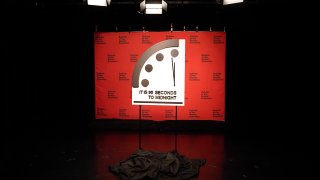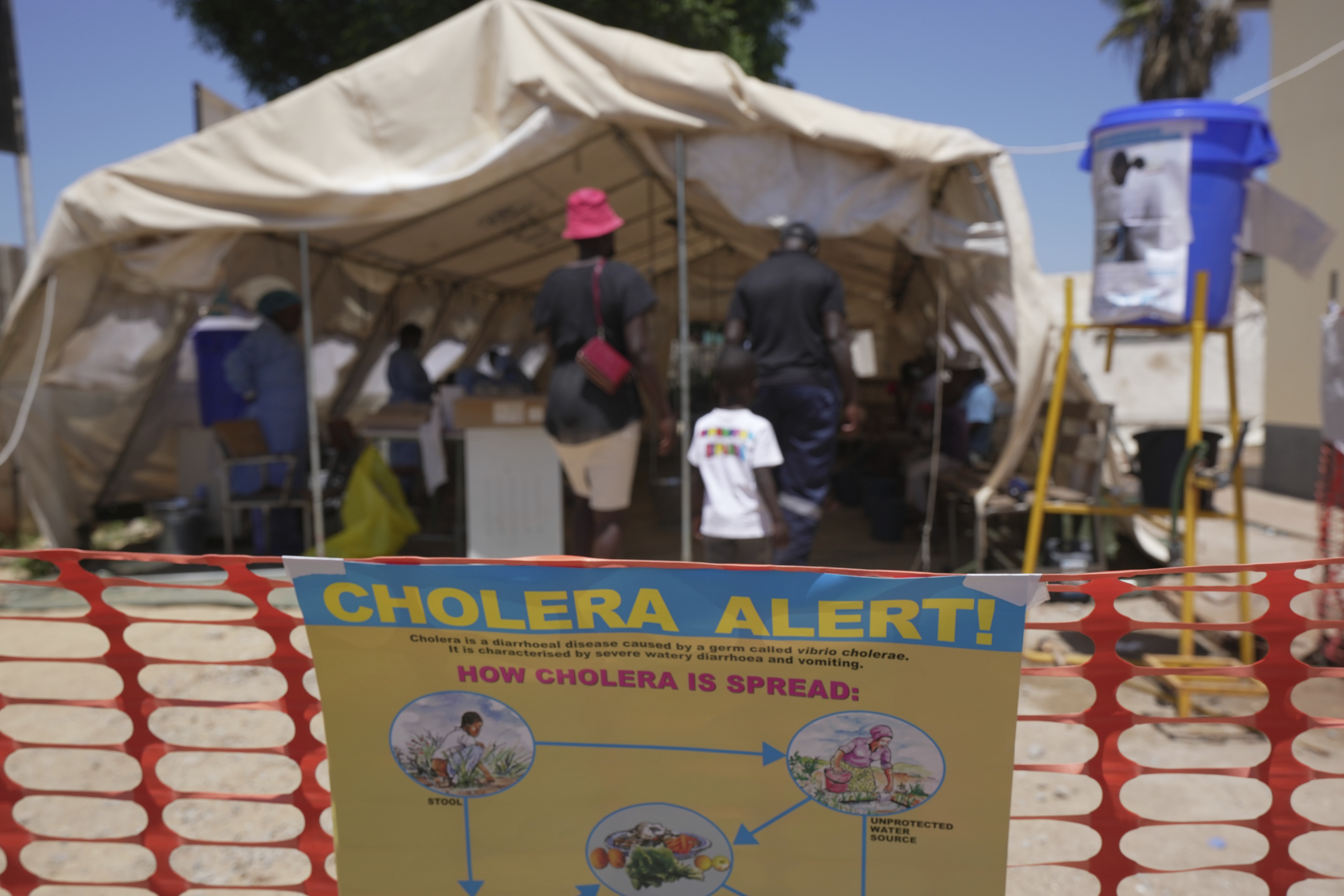
With Russia’s invasion of Ukraine and the specter of nuclear weapon use, Earth crept its closest to Armageddon, a science-oriented advocacy group said, moving its famous “Doomsday Clock” up to just 90 seconds before midnight.
“We are really closer to that doomsday,” former Mongolian president Elbegdorj Tsakhia said Tuesday at the Bulletin of Atomic Scientists annual announcement rating how close humanity is from doing itself in. He and former Ireland President Mary Robinson joined scientists to underscore what they consider a gathering of several existential threats, with Russian leader Vladimir Putin's actions and words chief among them.
“People and scientists are warning us and we have to wake up now,” he said.
It moved the clock 10 seconds closer to midnight, making it the closest it has ever been to striking 12.
Get Boston local news, weather forecasts, lifestyle and entertainment stories to your inbox. Sign up for NBC Boston’s newsletters.
To emphasize the effect that Russia’s invasion of Ukraine had on moving closer to theoretical doomsday, the group said it was also announcing the clock movement in the Russian and Ukrainian languages for the first time.
“Putin has repeatedly raised the specter of nuclear use,” said Steve Fetter, dean of the graduate school and a public policy professor at the University of Maryland.
Scientists and activists at the Bulletin announcement also mentioned nuclear weapon proliferation in China, Iran increasing its uranium enrichment, missile tests in North Korea, future pandemics from animal diseases, pathogens from lab mistakes, “disruptive technologies” and worsening climate change as other existential threats to humanity.
U.S. & World
The climate crisis remains a major threat, with the Bulletin's scientists noting that while carbon dioxide emissions fell in 2020 because of coronavirus lockdowns around the world, they rebounded to record highs in 2021 and increased again in 2022.
“With emissions still rising, weather extremes continue and are even more clearly attributable to climate change,” said Sivan Kartha, a senior scientist at the Stockholm Environment Institute and a member of the Bulletin’s science and security board.
There are reasons to be hopeful, however, Kartha said, with innovation around renewable energy and strong engagement from younger generations who have been passionately pushing for more climate action.
“There’s a generation growing up now, a generation that will be our leaders in the future, that is fired up about climate change,” Kartha said. “They’re concerned about it as a personal issue.”
What Is the 'Doomsday Clock'?
The Bulletin of Atomic Scientists was founded in 1945 to examine global security issues related to science and technology.
The advocacy group started in 1947 to use a clock to symbolize the potential and likelihood of people doing something to end humanity. Each year, the group consults with a board of sponsors to analyze the world’s most pressing threats in order to determine where the Doomsday Clock’s hands should be set.
It's been as much as 17 minutes from midnight after the end of the Cold War but in the past several years, the group has changed from counting down the minutes to midnight to counting down the seconds.
In 2020, the Bulletin set the Doomsday Clock at 100 seconds to midnight, the first time it had moved within the two-minute mark. For the next two years, the hands were left unchanged.
Doomsday has not happened yet.
“We are sending a message that the situation is becoming more urgent,” Bulletin President Rachel Bronson said at the online announcement. “Crises are more likely to happen and have broader consequences and longer standing effects.”



